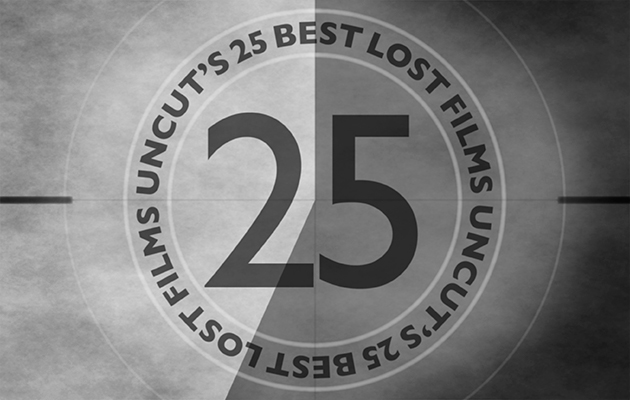Here, then, is our list of the greatest lost films, featuring work that’s fallen off the radar by such fabled directors as Stanley Kubrick, Robert Altman, Billy Wilder, Francis Ford Coppola, Lindsay Anderson, Orson Welles, John Huston and Jean-Luc Godard. This being Uncut, even Bob Dylan has made ...
5 MATEWAN
Director: John Sayles
Starring: Chris Cooper, James Earl Jones, Mary McDonnell (USA, 1987)
A long-running rights issue has kept Sayles’ superior modern-day western off the shelves. (“It’s all to do with who financed the film, who sold it, who they sold it to,” a source tells us. “But they hope the DVD will be out soon.”) A compassionate, socially committed drama, Matewan tells the true story of a coal miners’ strike in West Virginia in the early 1920s, and how the situation gradually degenerated into massacre. Future American Beauty/Adaptation star Cooper made a striking film debut as the idealistic union rep trying to unite the squabbling local whites with the immigrant Italian and Southern black people brought in as low-paid workers. Matewan remains significant as the first Sayles movie to demonstrate the filmmaker’s ability to deal with complex issues of race and diverse communities (see 1996’s Lone Star, or 2002’s Sunshine State). Sayles even contributed some authentic-sounding worker’s ballads for the score, and the excellent cast included Sayles regular David Strathairn and a young fellow by the name of Will Oldham…
Expect to pay: The ’90s VHS is a bargain at £5 or so
______________________
4 GREED
Director: Erich von Stroheim
Starring: Gibson Gowland, Zasu Pitts, Jean Hersholt (USA, 1924)
The unavailability on DVD of von Stroheim’s silent epic – one of cinema’s canonical works – is inexplicable, even if the film that we know today is only a butchered shadow of the movie the director originally turned in. Obsessed with capturing every nuance of the source novel, Frank Norris’ bitter portrait of moral corruption, McTeague, the director sought fanatical realism. He insisted on shooting on location, taking over whole blocks of San Francisco slums, dragging his cast and crew into the Sierra Nevada mountains, then out into the middle of Death Valley at the height of summer, where he almost destroyed his equipment. Von Stroheim originally assembled a film that was 10 hours long, before cutting it back to a more manageable four – at which point, the MGM studio took it from him and hacked it down to two. The excised footage remains lost, but cinéastes still live in hope. A fine restoration of von Stroheim’s four-hour cut, incorporating newly discovered stills, was assembled and screened in cinemas in 1999. At any length, essential.
Expect to pay: The ’90s ‘Silent Classics’ VHS is pricey – £30, say?
______________________
3 THE PROWLER
Director: Joseph Losey
Starring: Van Heflin, Evelyn Keyes, Sherry Hall (USA, 1951)
Once named by James Ellroy as his favourite film, which he described as “a masterpiece of sexual creepiness, institutional corruption and suffocating, ugly passion.” Heflin stars as a jaded cop who begins an affair with a bored housewife (Keyes) after responding to a call about a prowler. The lovers’ illicit coupling takes place while listening to Keyes’ husband (Hall) on his late-night radio show, his sign-off (“I’ll be seeing you, Susan”) alerting them to his imminent arrival home. Heflin kills his rival, making it look like an accidental shooting, but Keyes begins to suspect foul play. The noir plot references Double Indemnity or The Postman Always Rings Twice, but is perhaps an even darker condemnation of the American dream – its working title was The Cost Of Living – than the more celebrated movies of the genre. Director Losey was blacklisted during the McCarthy witchhunts, which might hold a clue to the film’s absence on DVD.
Expect to pay: We don’t think you’ll find it. And don’t confuse it with the 1981 horror of the same title!
______________________
2 CHIMES AT MIDNIGHT
Director: Orson Welles
Starring: Orson Welles, Jeanne Moreau, Margaret Rutherford, John Gielgud (Spain/Switzerland, 1966)
“If I wanted to get into heaven on the basis of one movie, this is the one I’d offer up,” Orson Welles told BBC’s Arena three years before his death, and his monochrome take on Shakespeare’s Falstaff was clearly one of the great director’s most personal projects. He first prepared a version of it while still at school and produced it for the theatre in 1939, before obsessively piecing together the film script from six Shakespeare plays and The Bard’s own source material, Holinshed’s Chronicles. Shot on a miniscule budget in a wintry Spain, there are some dazzling flourishes – notably the impeccable handling of the muddy, brutal Battle Of Shrewsbury. In the main, however, Welles eschewed stylistic flash, creating instead his most meditative piece, a mood reflected by his own performance as the ageing knight – an old fool, out of time. For many Welles aficionados, this is his masterpiece, but to the public at large it’s one of his least known movies, a victim of the indifference of initial critics, put off by that creaky budget, and a legacy of messy rights issues over Welles’ estate. All of which have kept it practically unseen ever since.
Expect to pay: A Spanish import is listed online at £30



